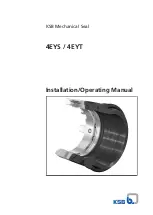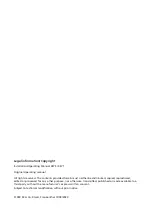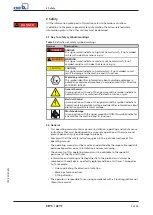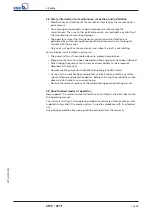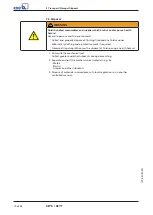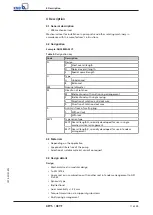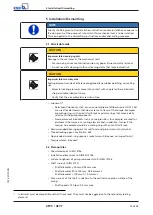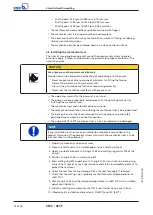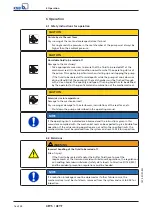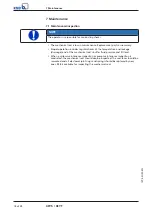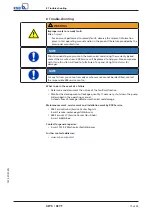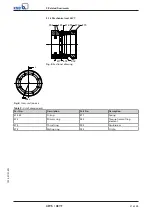
2 Safety
6 of 28
4EYS / 4EYT
1974.91/01-EN
2.3 Intended use
▪
This product must only be operated within the limit values stated in the technical
product literature for the ambient temperature, fluid handled, speed, density,
pressure, temperature and in compliance with any other instructions provided in
the operating manual or other applicable documents.
▪
The product must not be used in potentially explosive atmospheres.
2.4 Personnel qualification and training
▪
All personnel involved must be fully qualified to install, operate, maintain and
inspect the product this manual refers to.
▪
The responsibilities, competence and supervision of all personnel involved in
transport, installation, operation, maintenance and inspection must be clearly
defined by the operator.
▪
Deficits in knowledge must be rectified by means of training and instruction
provided by sufficiently trained specialist personnel. If required, the operator can
commission the manufacturer/supplier to train the personnel.
▪
Training on the product must always be supervised by specialist technical
personnel.
2.5 Consequences and risks caused by non-compliance with this manual
▪
Non-compliance with these operating instructions will lead to forfeiture of
warranty cover and of any and all rights to claims for damages.
▪
Non-compliance can, for example, have the following consequences:
– Hazards to persons due to electrical, thermal, mechanical and chemical
effects and explosions
– Failure of important product functions
– Failure of prescribed maintenance and servicing practices
– Hazard to the environment due to leakage of hazardous substances
2.6 Safety awareness
In addition to the safety information contained in this operating manual and the
intended use, the following safety regulations shall be complied with:
▪
Accident prevention, health regulations and safety regulations
▪
Explosion protection regulations
▪
Safety regulations for handling hazardous substances
▪
Applicable standards, directives and laws
2.7 Safety information for the user/operator
▪
Fit protective equipment (e.g. contact guards) supplied by the operator for hot,
cold or moving parts, and check that the equipment functions properly.
▪
Do not remove any protective equipment (e.g. contact guards) during operation.
▪
Provide the personnel with protective equipment and make sure it is used.
▪
Contain leakages of hazardous fluids (e.g. explosive, toxic, hot) so as to avoid any
danger to persons and the environment. Observe all legal requirements.
▪
The design of mechanical seals always produces a small amount of leakage.
▪
Higher leakage may occur especially in the running-in phase. The leakage must
be drained off in a controlled way
Summary of Contents for 4EYS
Page 1: ...KSB Mechanical Seal 4EYS 4EYT Installation Operating Manual...
Page 26: ......
Page 27: ......

